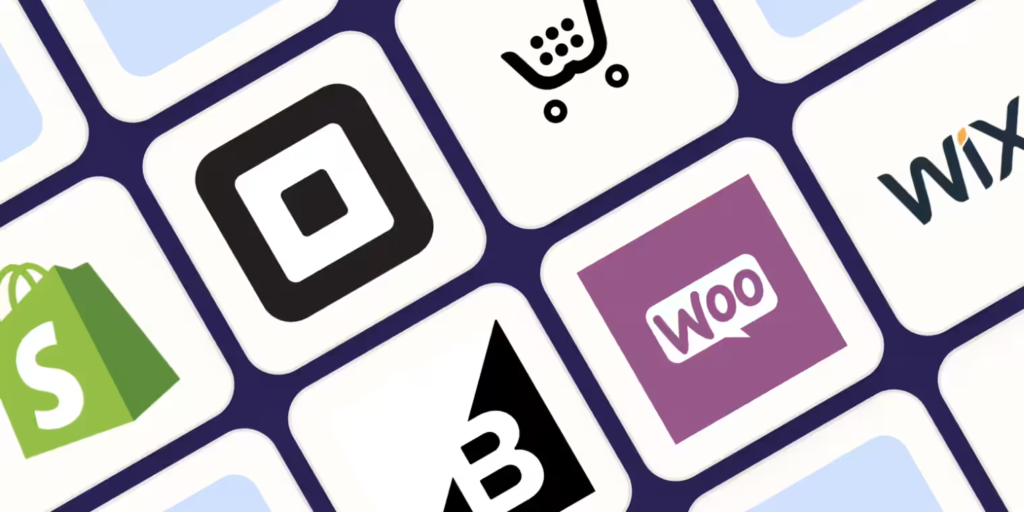Let The Games Begin!
Selecting the right e-commerce platform is crucial for your business’s success. With numerous options available, it’s essential to choose one that aligns with your specific needs and goals. Below we explore three popular e-commerce platforms: WooCommerce, Shopify POS, and Square.
Each of these platforms offers unique features and benefits that cater to different business goals and ambitions. From providing solutions for online and offline sales to inventory management, and customer management. However, they also come with their own set of challenges that need to be considered.
Understanding the strengths and limitations of each platform can help you make an informed decision, ensuring your business operates smoothly and efficiently in the competitive e-commerce landscape.
Let’s start with the basics.
What is E-Commerce?
E-commerce, short for electronic commerce, refers to buying and selling goods or services using the internet. Instead of going to a physical store, customers can browse and purchase items online from the comfort of their homes. E-commerce platforms, like websites and apps, facilitate these transactions by providing a virtual marketplace where businesses display their products, and customers can shop anytime, anywhere. This modern way of shopping offers convenience, a wider selection of products, and often better prices, revolutionising the way we shop and do business.
What is WooCommerce?
WooCommerce is a customisable, open-source e-commerce platform built on WordPress. It provides a flexible solution for businesses looking to create a highly tailored online store.
Why Choose WooCommerce?
WooCommerce is ideal for businesses that require extensive customisation and control over their online store. As an open-source platform, it allows developers to create custom plugins providing unparalleled flexibility for your needs. It’s also a cost-effective option since it’s free to use, though you’ll need to pay for hosting and any premium extensions, depending on how your business operates – from a solo food truck to multiple brick and mortar franchises.
What is Shopify POS?
Shopify POS (Point of Sale) is an integrated system that allows you to manage both your online and physical store from a single platform. It connects seamlessly with the Shopify e-commerce platform (for more information on Shopify, check out our blog here) providing a unified solution for inventory, sales, and customer management.
Why Choose Shopify POS?
If you run both an online and a brick-and-mortar store, Shopify POS offers an all-in-one solution that simplifies inventory management and sales tracking against each customer. Its user-friendly interface and extensive app ecosystem make it easy to customise and expand your store’s capabilities.
What is Square?
Square is a comprehensive payment processing system that also offers a suite of e-commerce tools. It includes a website builder, online payment processing, and integration with Square’s POS system for physical sales.
Why Choose Square?
Square is a great option for small businesses looking for an easy-to-use, integrated solution. It provides a straightforward way to start selling online and offline, with no monthly fees for its basic e-commerce features. Square’s simplicity and ease of use are its standout features, making it accessible for businesses of all sizes.
Similarities
Despite their differences, WooCommerce, Shopify POS, and Square share several similarities. All three platforms offer robust solutions for managing online sales, including inventory management, payment processing, and customer management features. They each provide tools to create and customise an online store, support various payment methods, and offer integrations with third-party applications to extend their functionality.
When making the decision on which one suits you best, you need to understand the challenges that can arise for each platform especially for long-term solutions.
Challenges
WooCommerce
- Learning Curve: WooCommerce requires familiarity with WordPress, which can be a barrier for users without prior experience.
- Maintenance: Managing updates, security, and compatibility issues can be time-consuming and may require technical expertise.
- Hosting Requirements: Unlike Shopify and Square, WooCommerce requires you to manage your own hosting, which can add to the complexity and cost.
- Variable Costs: While WooCommerce itself is free, costs can add up with premium extensions, plugins, and hosting services.
Shopify POS
- Cost: Shopify POS charges a monthly fee, which can become expensive, especially if you opt for advanced plans and features.
- Complexity for Beginners: While Shopify is user-friendly, the extensive app ecosystem and customisation options can be overwhelming for new users.
- Dependency on Third-Party Apps: To access advanced features, you might need to rely on third-party apps, which can add to the overall cost and complexity.
- Limited Customisation: Compared to WooCommerce, Shopify offers less flexibility in terms of code-level customisation.
Square
- Simplified Toolkit: Square’s e-commerce tools are less customisable compared to WooCommerce and Shopify.
- Scalability: While ideal for small to medium-sized businesses, Square may lack the advanced features needed for larger enterprises.
- Transaction Fees: Transaction fees can accumulate, particularly for businesses with high sales volumes.
- Feature Limitations: The basic e-commerce features are free, but advanced features may require additional costs.
The Wrap Up
Choosing the right e-commerce platform depends on your business needs, technical expertise, and budget.
WooCommerce provides extensive customisation for those comfortable with WordPress but requires more technical management. Shopify POS is ideal for businesses with both online and physical stores, offering seamless integration and a comprehensive app ecosystem, though it can be costly. Square’s simplicity suits small to medium-sized businesses with its straightforward, inexpensive setup and integrated payment processing, though it may lack the features and customisation required for larger scale enterprises.
When picking the right e-commerce platform, think about your needs now and where you want to go. Compare features, costs, and how each option can grow with you. This way, you’ll find the best platform to support your business’s unique goals and operations, making sure it works for you both today and tomorrow.







